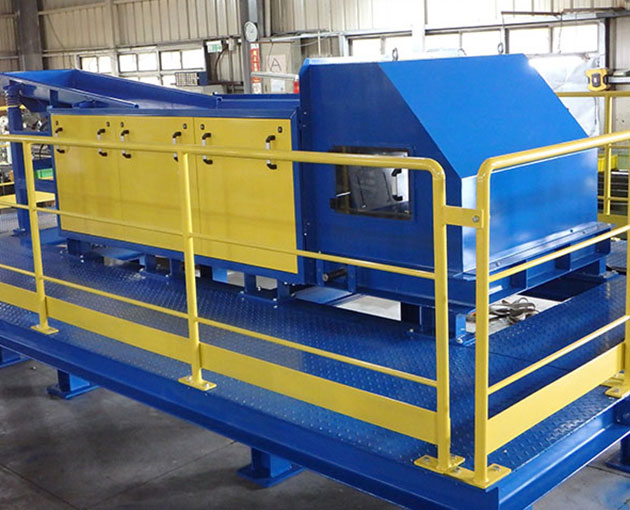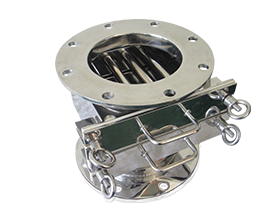Share


One of the changes that Wuhan pneumonia (new crown pneumonia) has brought to the world is resource recycling. Many countries have realized that the closer the supply chain is to their home, the better, and recycling is one way to ensure that there is no shortage of raw materials.
In fact, for decades, the United States and other advanced countries have relied on China to acquire and recycle nearly half of their plastic waste. However, since China banned the import of recyclable waste in 2018, many Western countries have turned to AI artificial intelligence in order to strengthen their processing capabilities. .
Experts said that in the past, most of the recycling of resources was carried out by human beings, which was a dull, dirty and dangerous job. It is suitable to be replaced by robots, which can make resource recycling more efficient and more flexible.
"The ban exposes how fragile the infrastructure currently being recycled is," said Chris Wirth, vice president of marketing at AMP Rototics, an artificial intelligence company in Denver.
But this has instead given the impetus to start-ups such as AMP to develop AI technology for resource recycling. The vision systems developed by these companies can learn from experience and identify the trademark, color, shape and texture of recycled products through visual cues, even if the recycled content is broken, folded or dirty, and can be sorted, dismantled untie. For example, the robot can recognize the Nestlé logo with a cow painted on the bottle and determine that it is a dairy product.
Such systems are good at identifying small objects, such as Nespresso coffee capsules, which are theoretically recyclable but often thrown away as trash. "The robot has a way to sort through layers, and it's getting smarter because of the AI's ability to learn," Voss said.
In the past, we were most familiar with the picture of the resource recycling industry, where the recyclables were advancing on the conveyor belt, sorted and screened by gloved workers and machinery, but there may be needles, used diapers, and even propane with the risk of explosion. The jar is hidden in it.
Although traditional machines can sort items that can be directly recycled, they cannot disassemble the products. However, in general, coffee cups and yogurt jars usually have only some components that can be recycled, and machines cannot easily disassemble them. Today, manufacturers can add AI technology developed by AMP to existing machines, and can carry out recycling and dismantling operations more efficiently without spending a lot of money on equipment changes.
Dismantling is becoming more and more important to the recycling industry as more and more discarded electronic products such as mobile phones, tablets and digital appliances are produced, and the gold, silver, platinum and cobalt in the products are the most valuable components.
The economics of recycling have changed
Racim Miffard, a professor of sustainable engineering at Loughborough University in the UK, therefore expects the automotive industry to be a big target for recycling, as more and more electronic parts are found in cars and electric vehicles contain more valuable raw materials.
“Currently, we focus on three core metals – steel, copper and aluminum – which together account for about 60% of the total value, but for electric vehicles, the most valuable parts are precious metals such as gold and platinum. It only accounts for about 4 to 5% of the whole, so in terms of 80% of the recovered value, the weight used to account for about 60%, and it has become about only 4%.”
In line with the fundamental change in recycling economics, Rahim Mifad's team is developing a dismantling robot. Experts hope that improving efficiency through automation, combined with the ability to extract more valuable raw materials from electronic waste, will help recyclers deal with it. More garbage.
Under the current epidemic crisis, the predicament of supply chain disruption has made many countries think about how to strengthen recycling. "During World War II, recycling was not for the environment, but for the localization of raw materials and supply chains," Voss believes that this logic has been revived, and that reducing plastic waste also has its ecological urgency.
Horowitz, the founder of AMP, said that waste is actually very valuable. The problem is that sorting and dismantling consumes too much manpower and material resources, eroding the value of waste. Therefore, using robots can actually recover the value of waste and ensure that Quality of recyclables.
The recycling industry in the West has struggled to recruit enough staff, says Voss, AMP's vice president of marketing, "AI technology has enabled the creation of a sustainable workforce to fill these vacancies; jobs that are dreary, dirty, and dangerous, just for robots. and artificial intelligence.”
Source: Financial Times, CNBC




![[Recycling Economics] Retrieving the value of waste AI becomes a new force in resource recycling](../../UserFiles/news/%E6%9C%AA%E5%91%BD%E5%90%8D-1%20%28ai%29_pic.jpg)